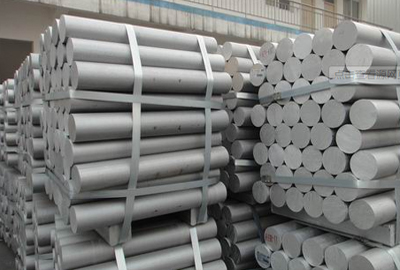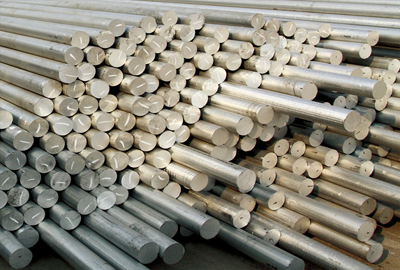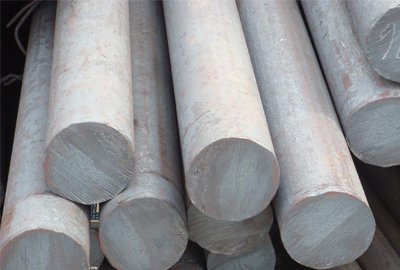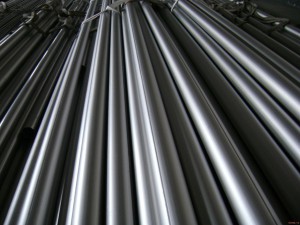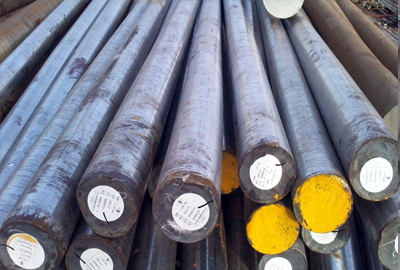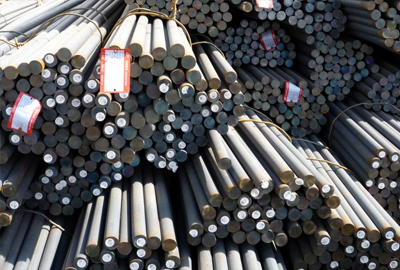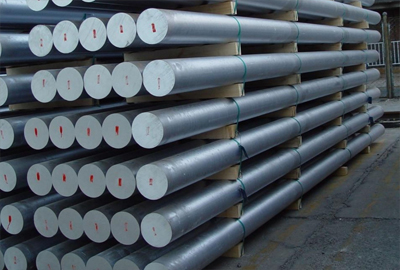Mat.No. 1.7228, DIN 50CrMo4, AISI 4150
Short Description:
Designation by Standards Brand Name Ravne No. Mat. No. DIN EN AISI VCMO150 725 1.7228 50CrMo4 50CrMo4 4150 Chemical Composition (in weight %) C Si Mn Cr Mo Ni V W Others 0.50 max. 0.40 0.65 1.05 0.23 - - - - DescriptionThis is a higher carbon variation of the chromium, manganese, molybdenum 4100 series of low alloy steels. ApplicationsStatically and dynamically stressed components for vehicles, engines and machines, for parts of larger cross-sections. Components for driv...
Product Detail
FAQ
Product Tags
Designation by Standards
| Brand Name | Ravne No. | Mat. No. | DIN | EN | AISI |
| VCMO150 | 725 | 1.7228 | 50CrMo4 | 50CrMo4 | 4150 |
Chemical Composition (in weight %)
| C | Si | Mn | Cr | Mo | Ni | V | W | Others |
| 0.50 | max. 0.40 | 0.65 | 1.05 | 0.23 | - | - | - | - |
Description
This is a higher carbon variation of the chromium, manganese, molybdenum 4100 series of low alloy steels.
Applications
Statically and dynamically stressed components for vehicles, engines and machines, for parts of larger cross-sections. Components for driving gears, axles, rolls, rings.
Physical properties (avarage values) at ambient temperature
Modulus of elasticity [103 x N/mm2]: 190-210
Density [g/cm3]: 7.84
Continuous Cooling Transformation (CCT) Diagram

Click the image to enlarge the diagram.
Time-Temperature Transformation (TTT) Diagram

Click the image to enlarge the diagram.
Soft Annealing
Heat to 680-720oC, cool slowly in furnace. This will produce a maximum Brinell hardness of 248.
Hardening
Hardening: 820-850, 830-860oC, water, oil.
Normalizing
Normalizing: 840-860oC
Tempering
Tempering temperature: 540-680oC
Hardness after heat treatmnet
Aannealed at 815oC: 197 HB
Normalized at 870oC: 321 HB
Oil quenched, fine grained, tempered at 205oC: 530 HB
Oil quenched, fine grained, tempered at 315oC: 495 HB
Oil quenched, fine grained, tempered at 425oC: 440 HB
Oil quenched, fine grained, tempered at 540oC: 370 HB
Oil quenched, fine grained, tempered at 650oC: 290 HB
Mechanical Properties in Hardening and Tempering Condition
| Diameter (mm) | 0.2 % proof stress (N/mm2) | Tensile strength (N/mm2) | Elongation (%) | Reduction of area (%) | Notch impact energy (ISO-V) (J) |
| up to 16 | 900 | 1100-1300 | 9 | 40 | 35 |
| 17-40 | 780 | 1000-1200 | 10 | 45 | 35 |
| 41-100 | 700 | 900-1100 | 12 | 50 | 35 |
| 101-160 | 650 | 850-1000 | 13 | 50 | 35 |
| 161-250 | 550 | 800-950 | 13 | 50 | 35 |
Diagram Tempering Temperature – Mechanical Properties

Click the image to enlarge the diagram.
Forging
Hot forming temperature: 1050-850oC.
Machinability
Machinability of 4150 is good in the annealed condition, or in the normalized condition. After heat treatment the alloy can be very hard and it is best to limit machining at that point to grinding.
Corrosion Resistance
This is not a corrosion resistant alloy. Use protective coating.
Welding
The alloy may be welded by conventional methods. Welding the alloy in the hardened (heat treated) condition may affect the mechanical properties due to welding heat input. A post-weld heat treatment may be needed. Follow an approved weld procedure.
Forms manufactured: Please see the Dimensional Sales Program.
Disclaimer
The information and data presented herein are typical or average values and are not a guarantee of maximum or minimum values. Applications specifically suggested for material described herein are made solely for the purpose of illustration to enable the reader to make his own evaluation and are not intended as warranties, either express or implied, of fitness for these or other puposes. There is no representation that the recipient of this literature will receive updated editions as the become available.
FAQ Content

